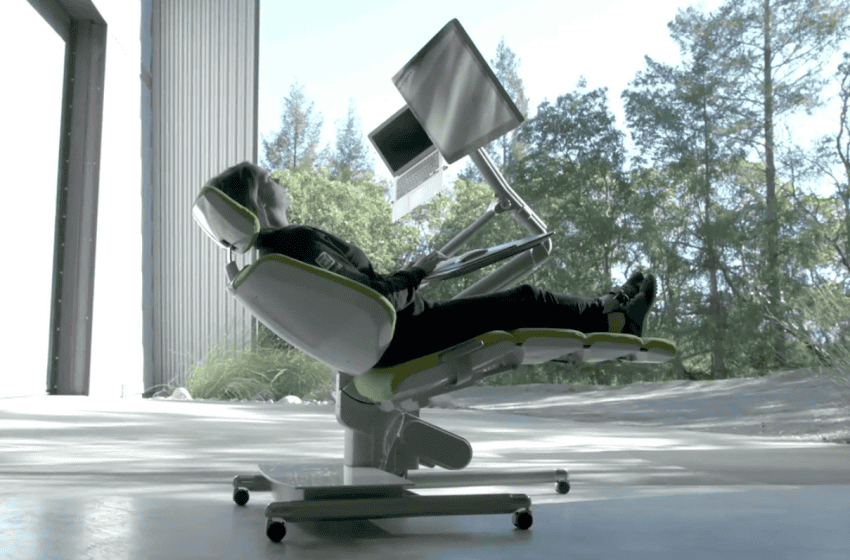Developed by entrepreneurs and investors John Speicher and Che Voigt, the patented Altwork Station allows users to work in a variety of positions, from sitting, and focused reclining, with an all-in-one integrated monitor, desk and chair workstation that moves with the user’s body.
VIDEO: How this amazing chair works
“You would want to sit, stand, recline into a focus position for tackling your toughest work challenges or even work in a zero gravity position—all while maintaining ergonomic integrity and being comfortable so you can be more productive.” said the website.
“As engineers, designers, and technologists we believe your work can flow more freely when your computer moves with you throughout your work day.”
“We designed the Altwork Station as a tool for professionals who use computers most of the day,” said CEO Voigt. “High-intensity computer users are defined as those who spend at least four hours in from of their computers on a daily basis, while being required to address complex tasks for extended periods of time. Our mission is to create furniture that makes the body comfortable so the mind can be free.”
He said that a majority of employees now work in an information-rich environment requiring access to online and computer data from multiple sources. In the past, these workers had to conform to a static, virtually fixed, chair-and-desk office configuration that had not changed much for over 150 years, he said.
According to Voigt, today’s knowledge workers say they want a workspace that adapts to them, one that enables them to work smarter and more efficiently, especially in open-space office layouts.
With the touch of a built-in, push-button remote, the Altwork Station’s chair rises, lowers or reclines into a user-chosen position. The adjustable leg rest allows users to stretch out, or determine their preferred comfort angle. The ability to stand at work also has advantages.
Voigt said experts believe a large part of the health benefits of standing, for example, come from keeping the torso and legs more than 135 degrees apart to allow for proper blood flow and to alleviate the possibility of nerve effects often associated with sitting, such as Sciatic back and leg pain, compared with the 90 degree angle that traditional chairs require.













